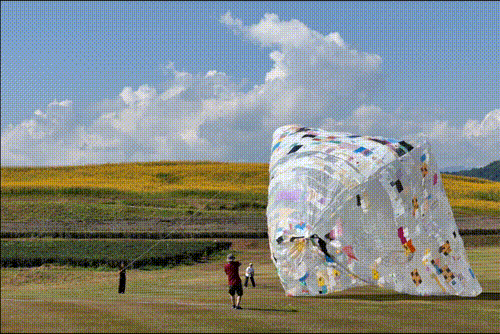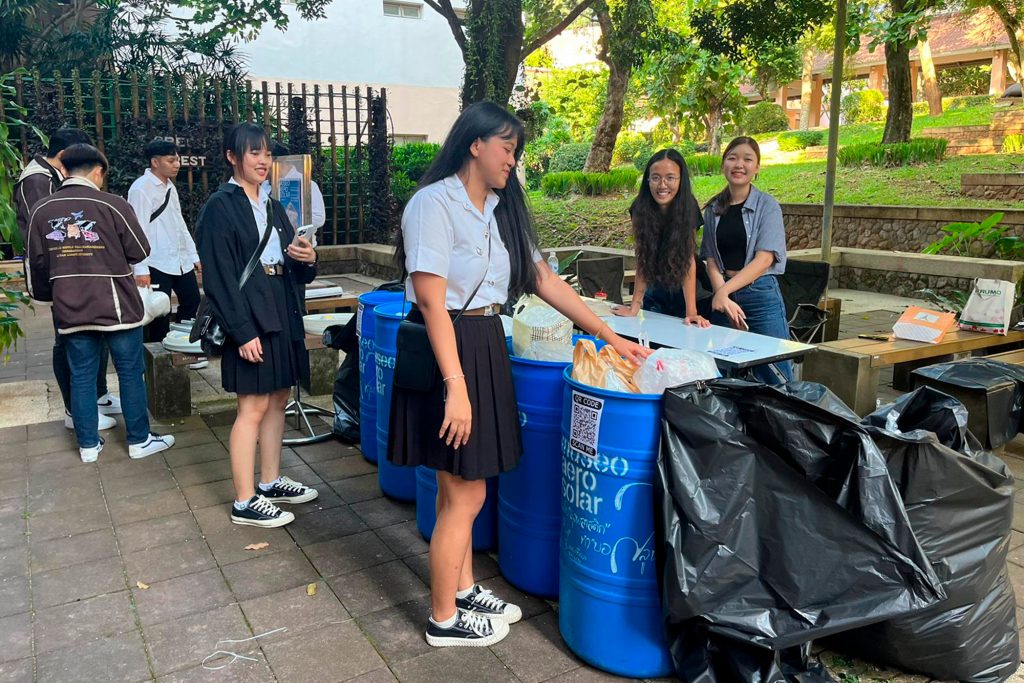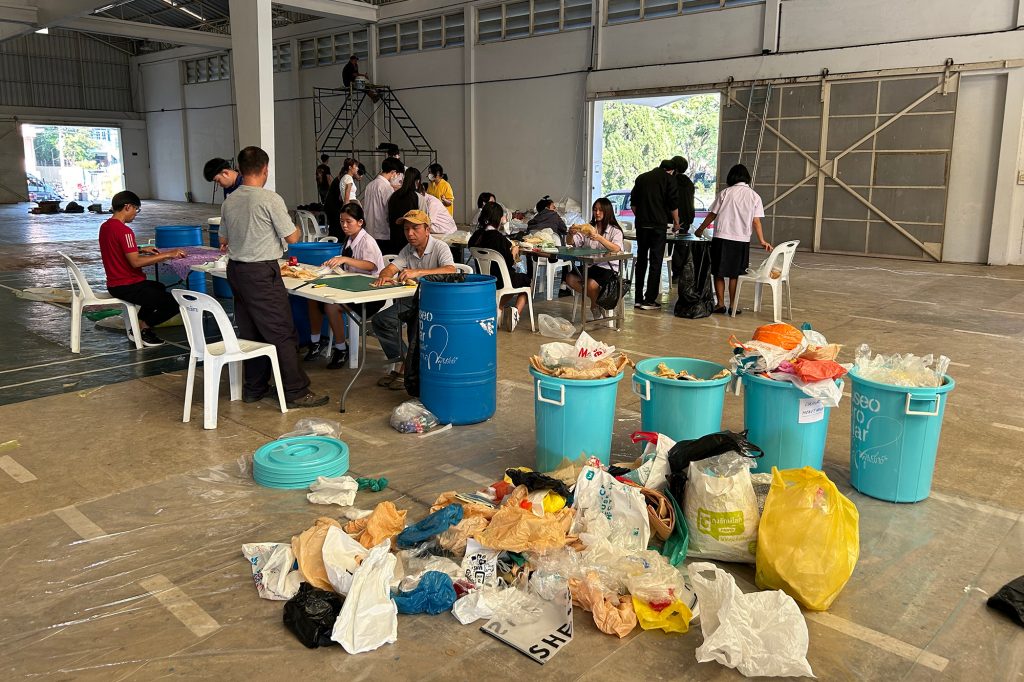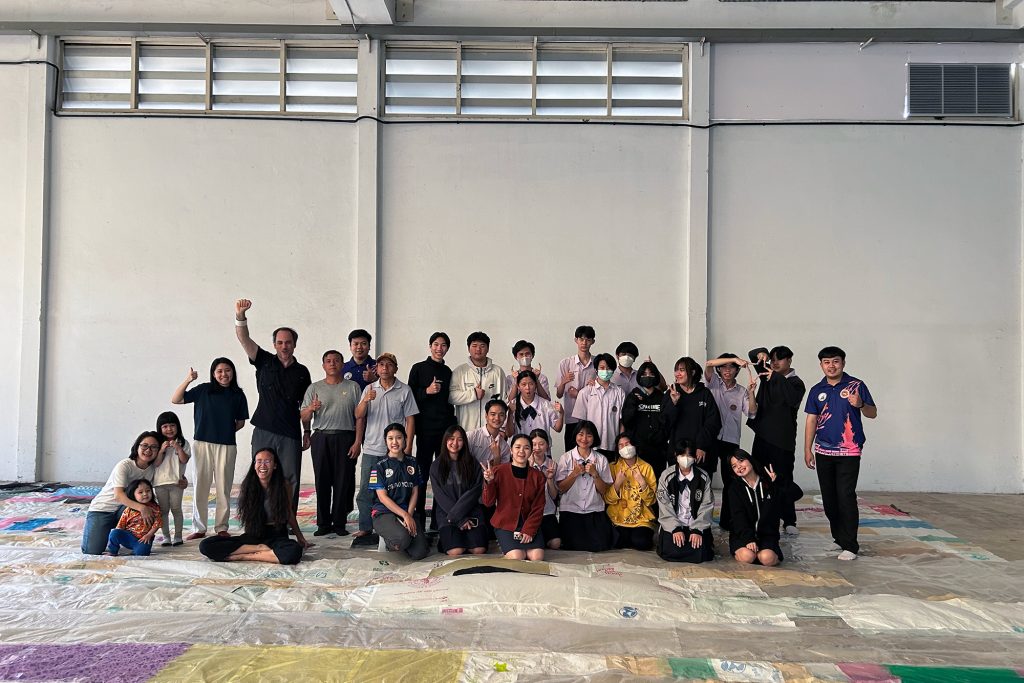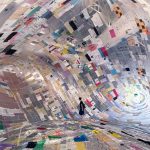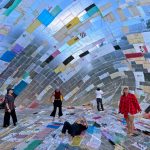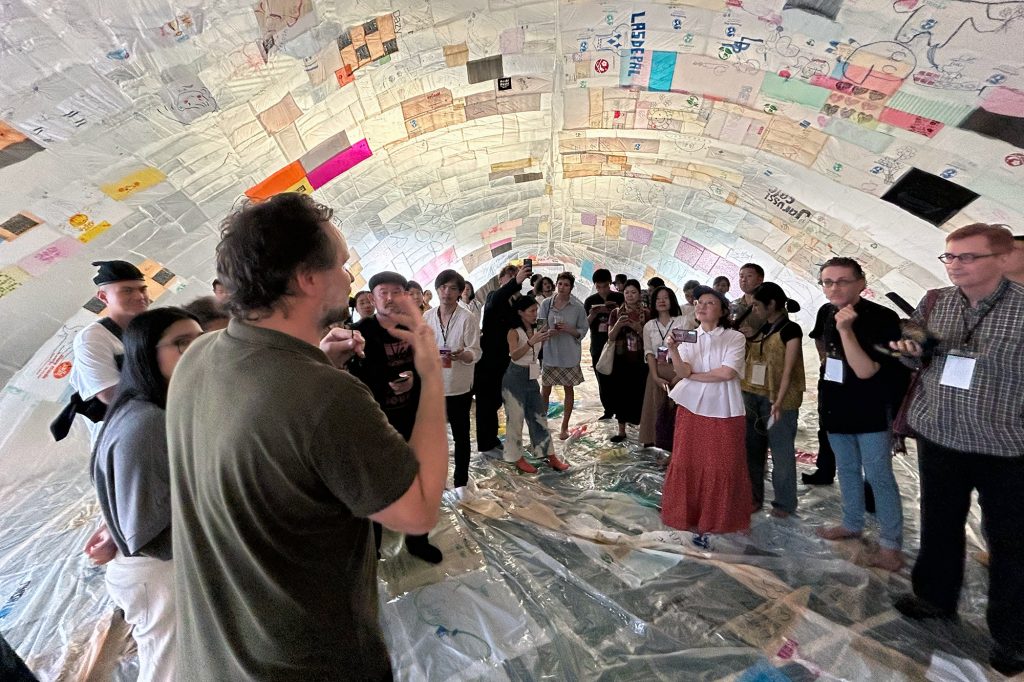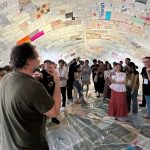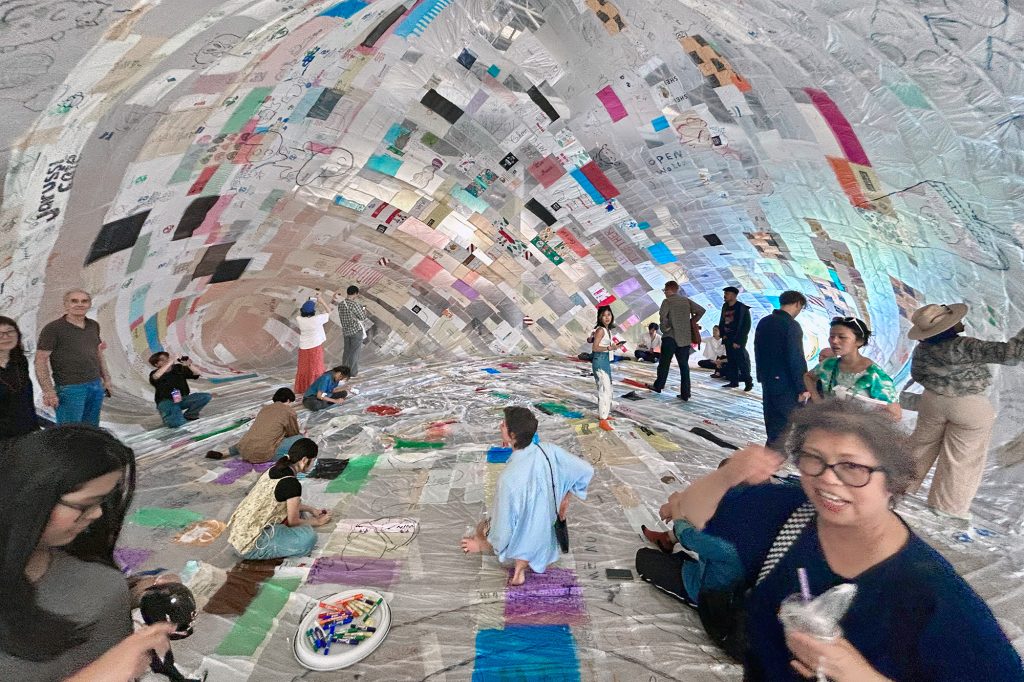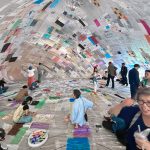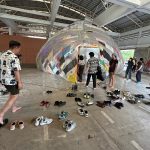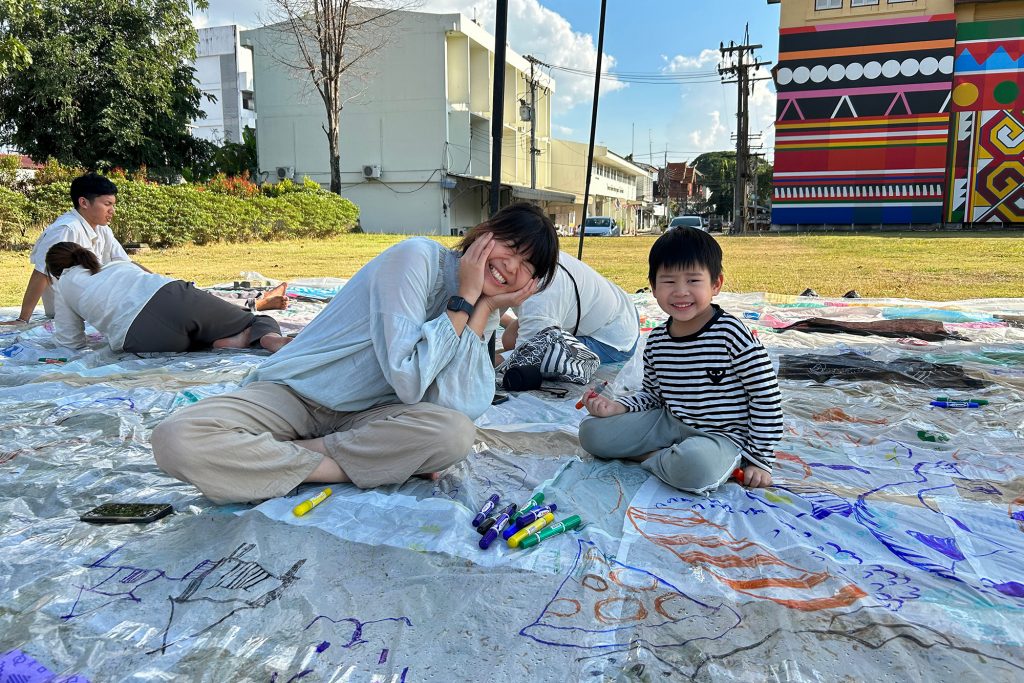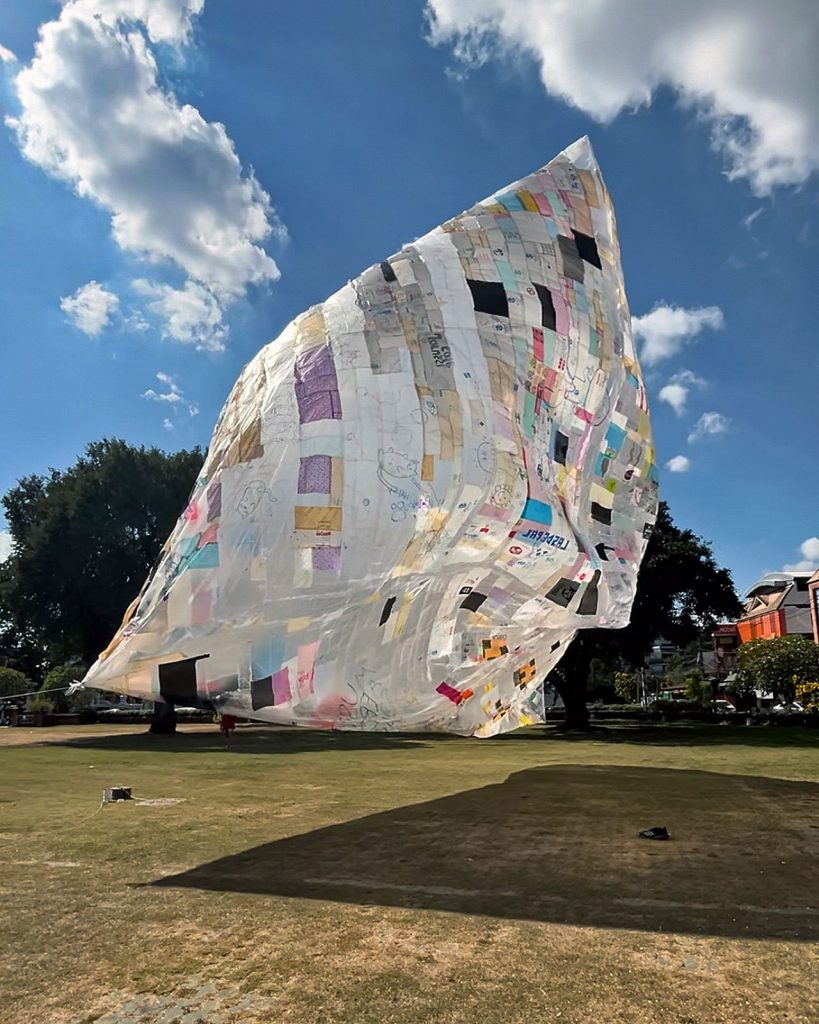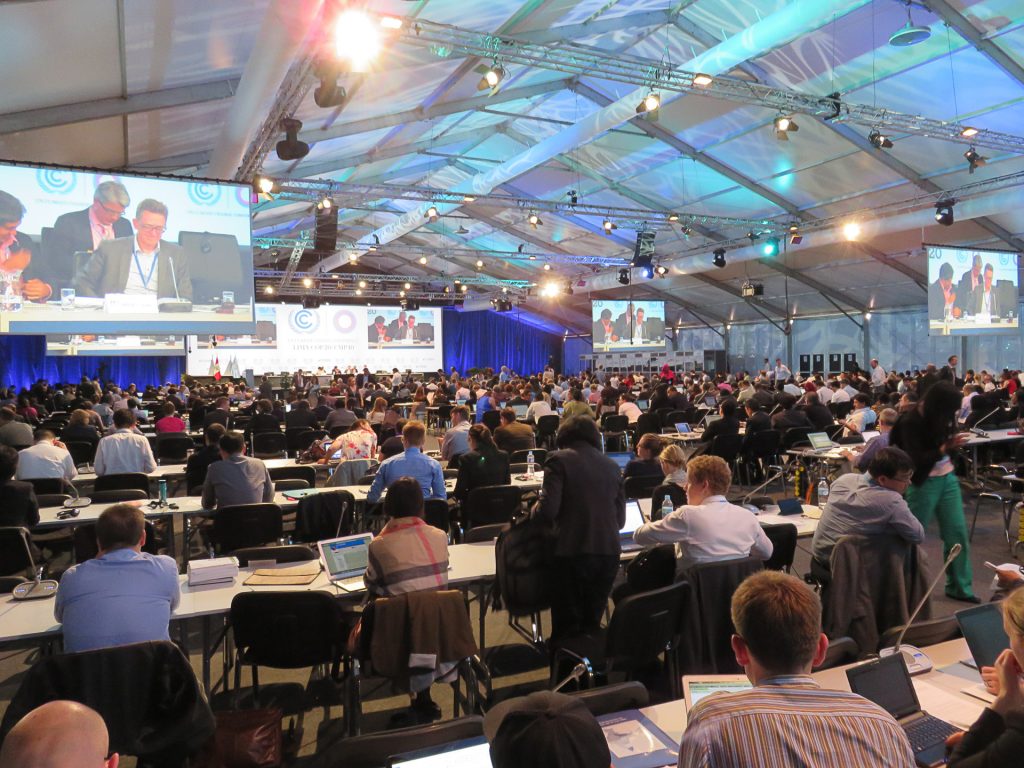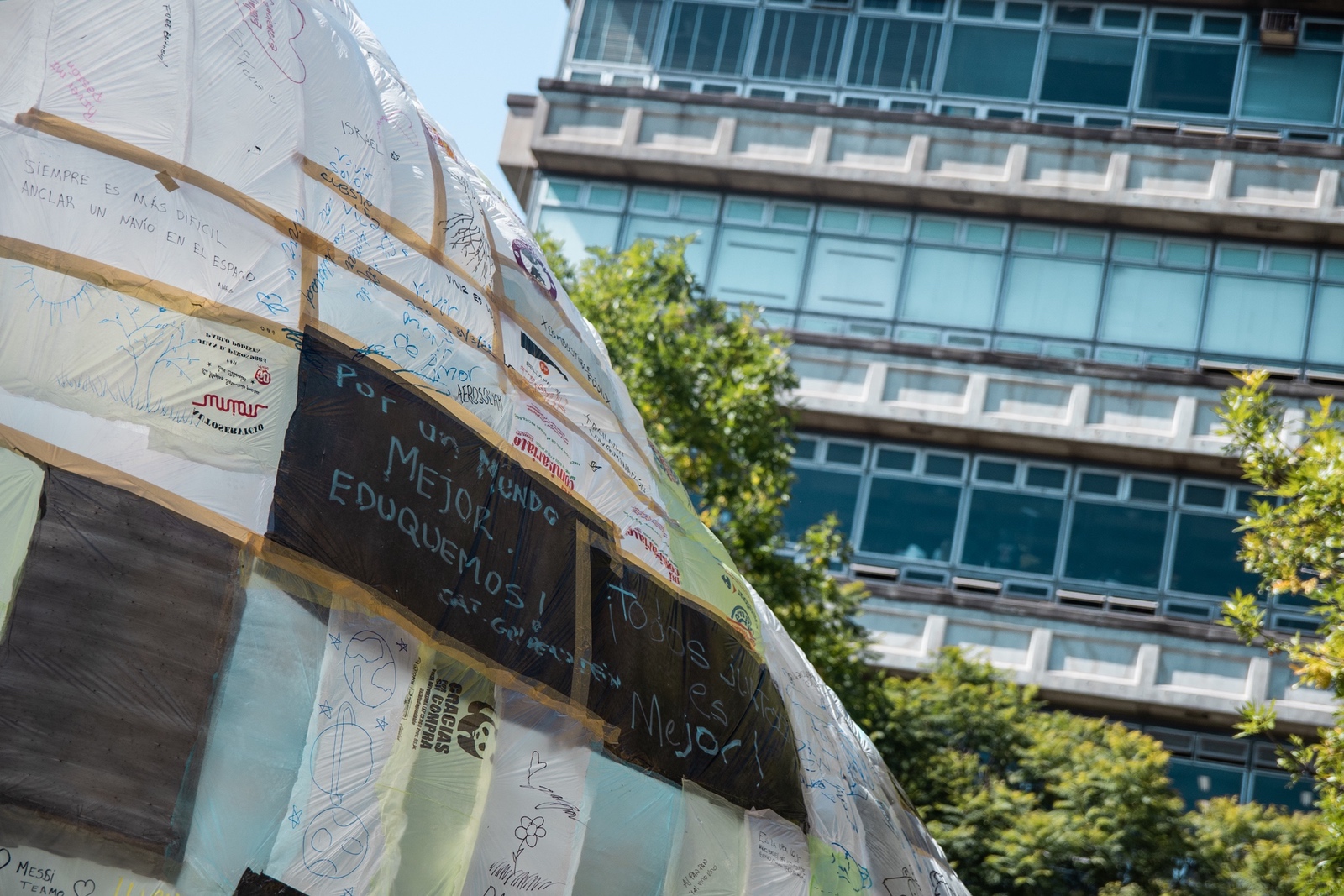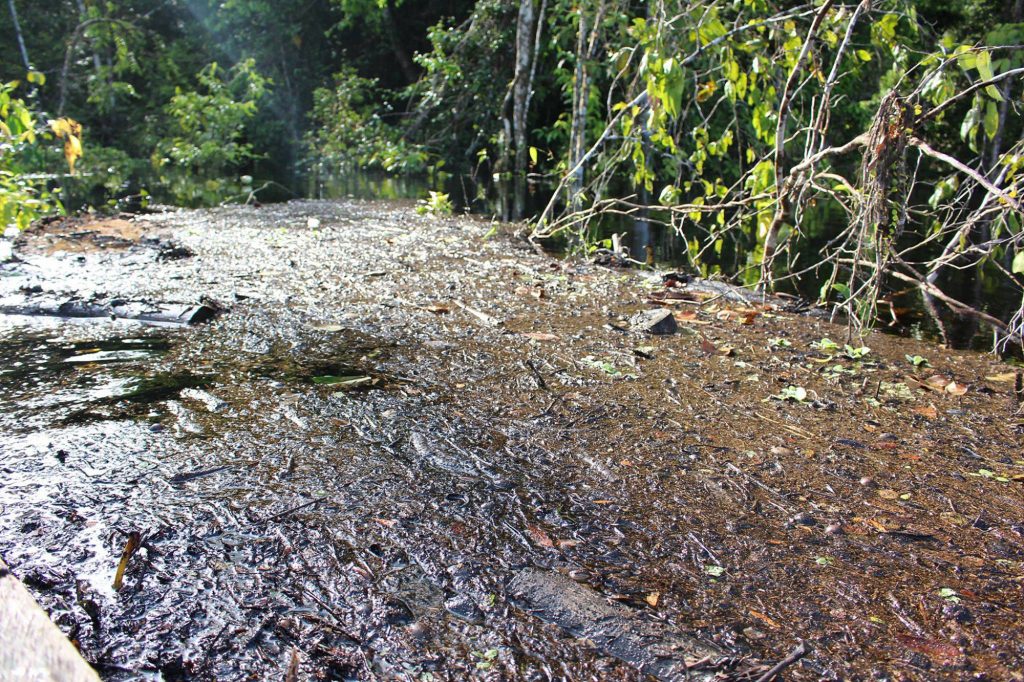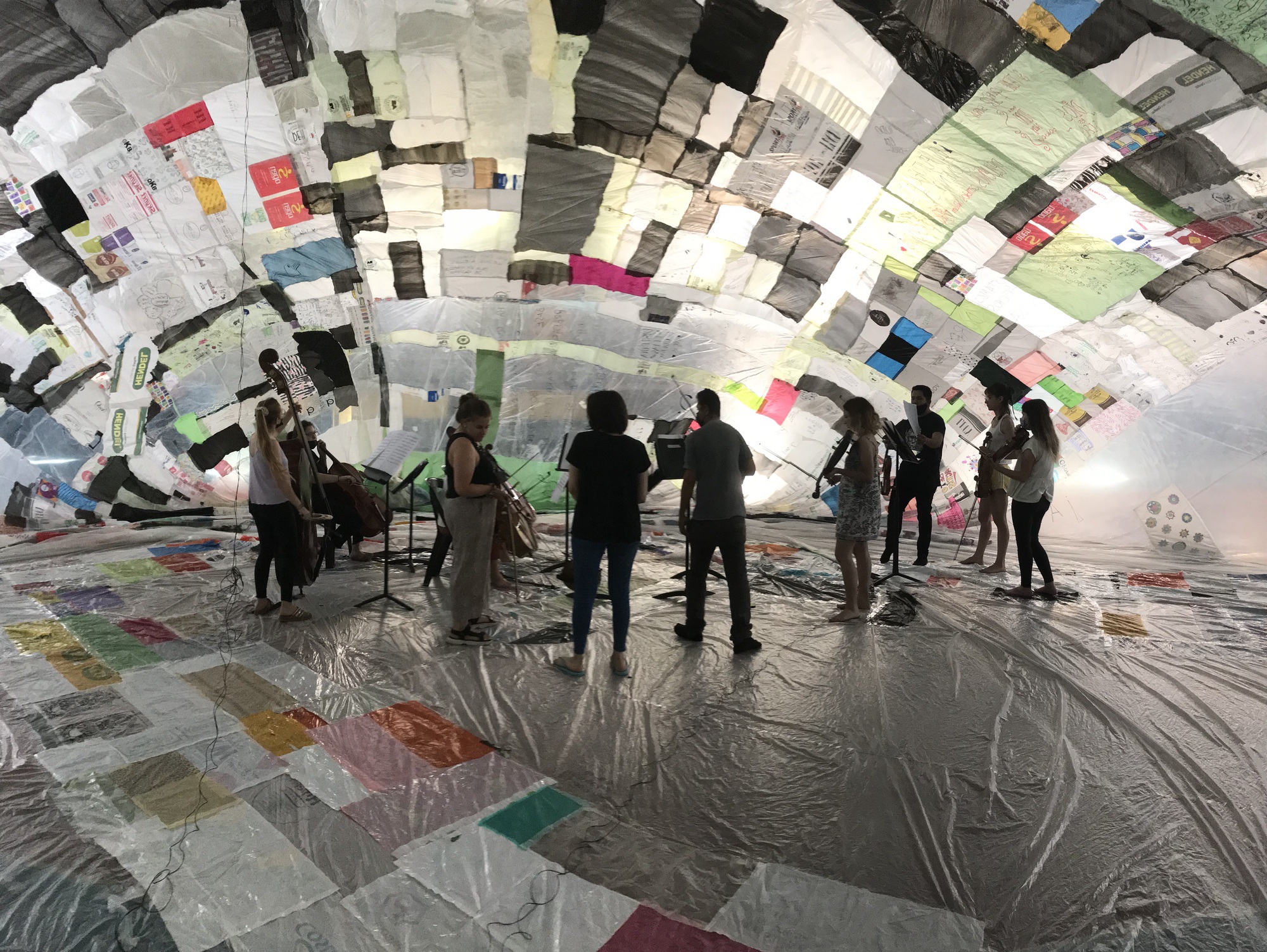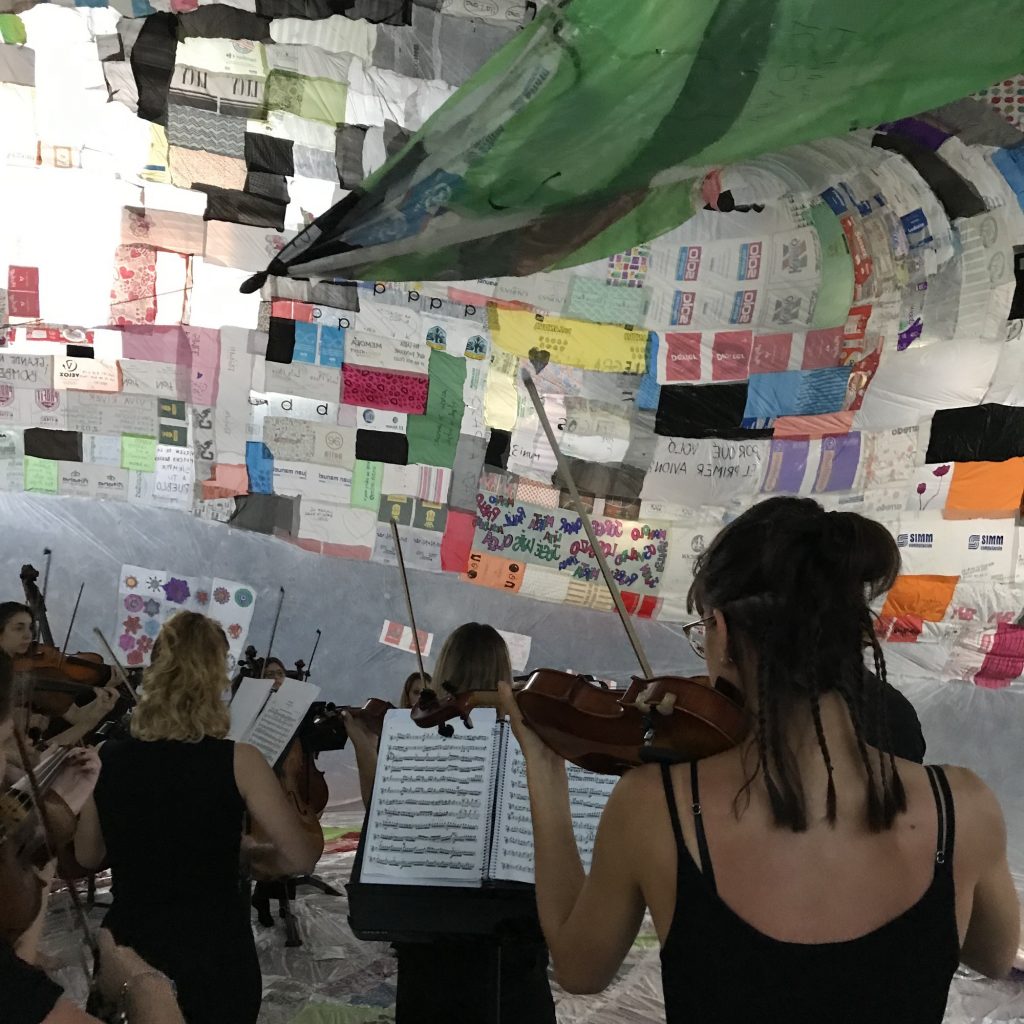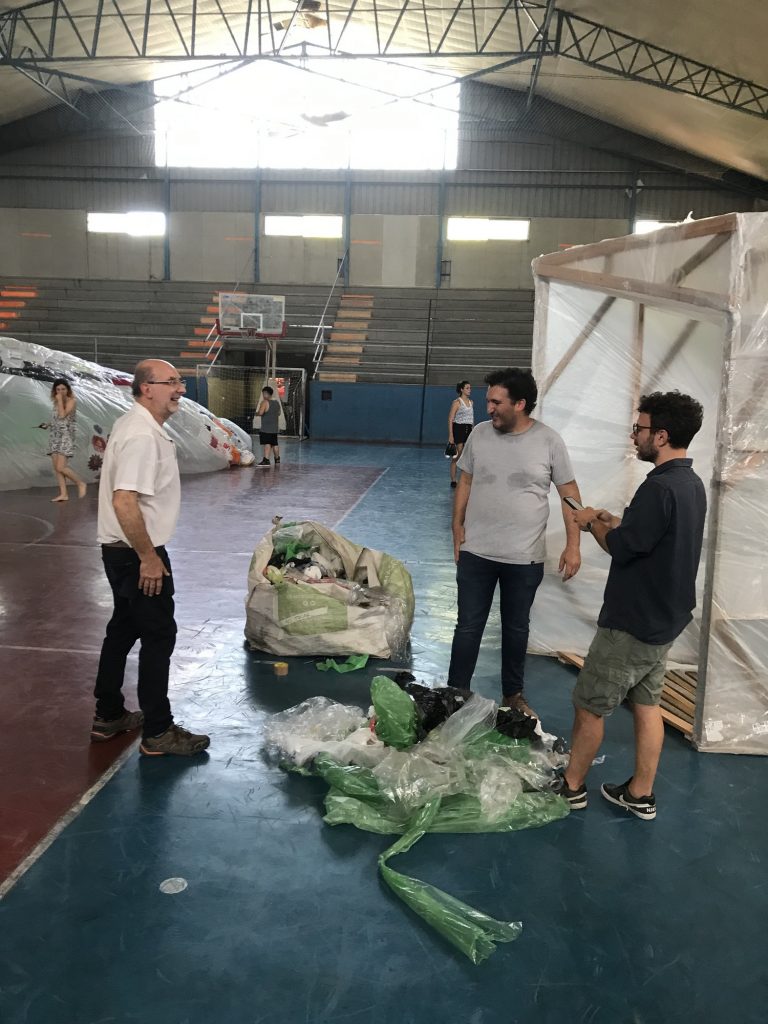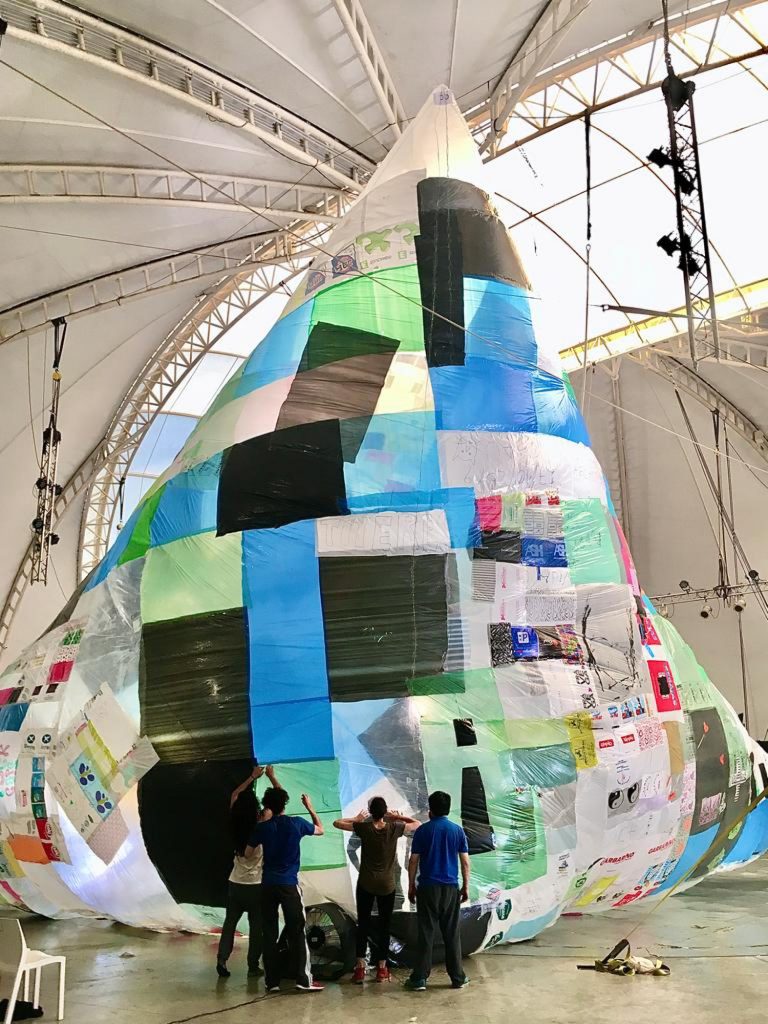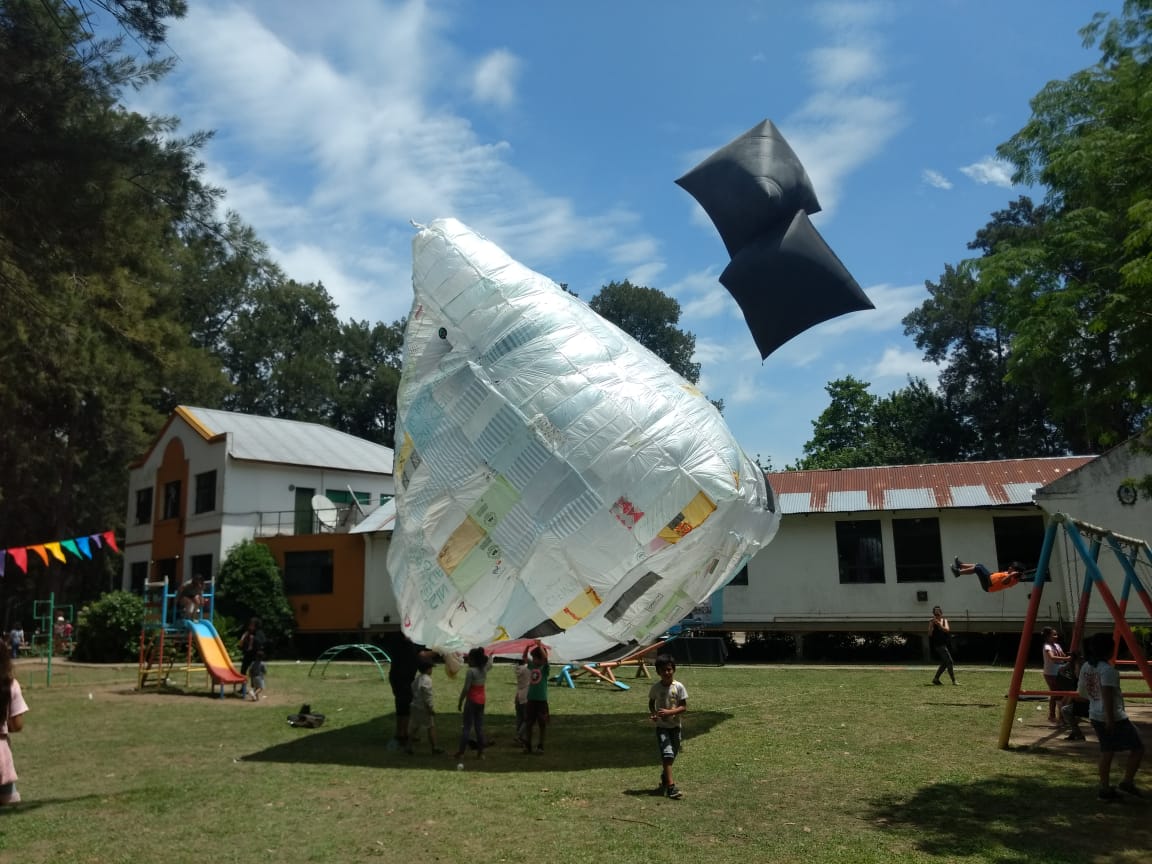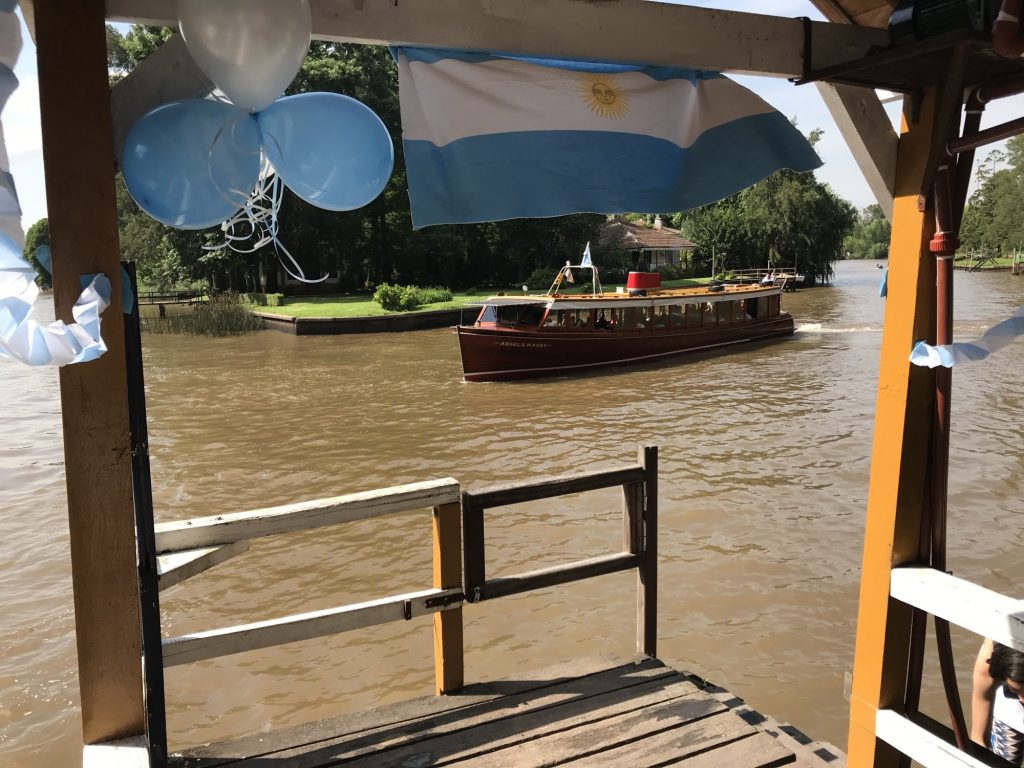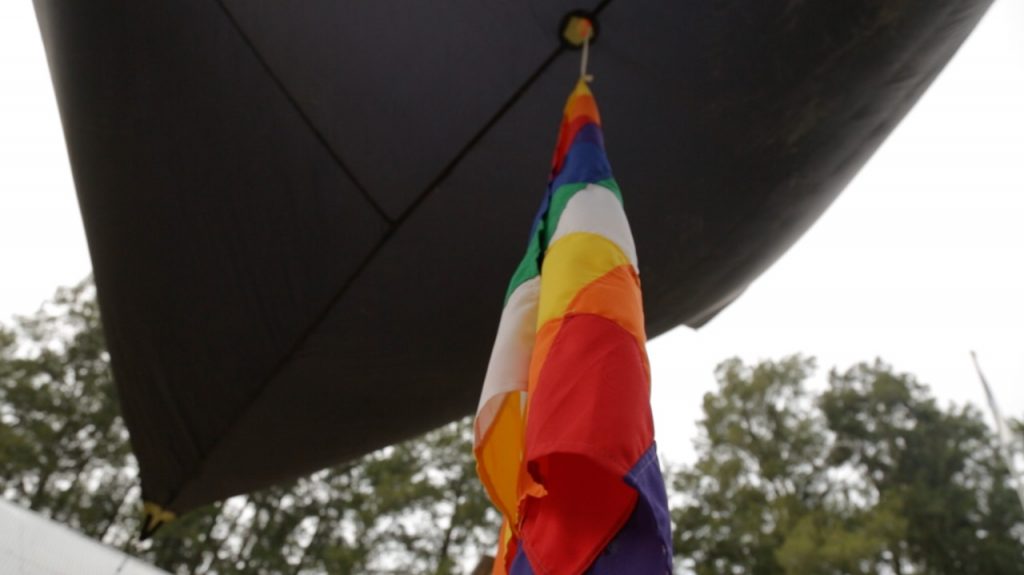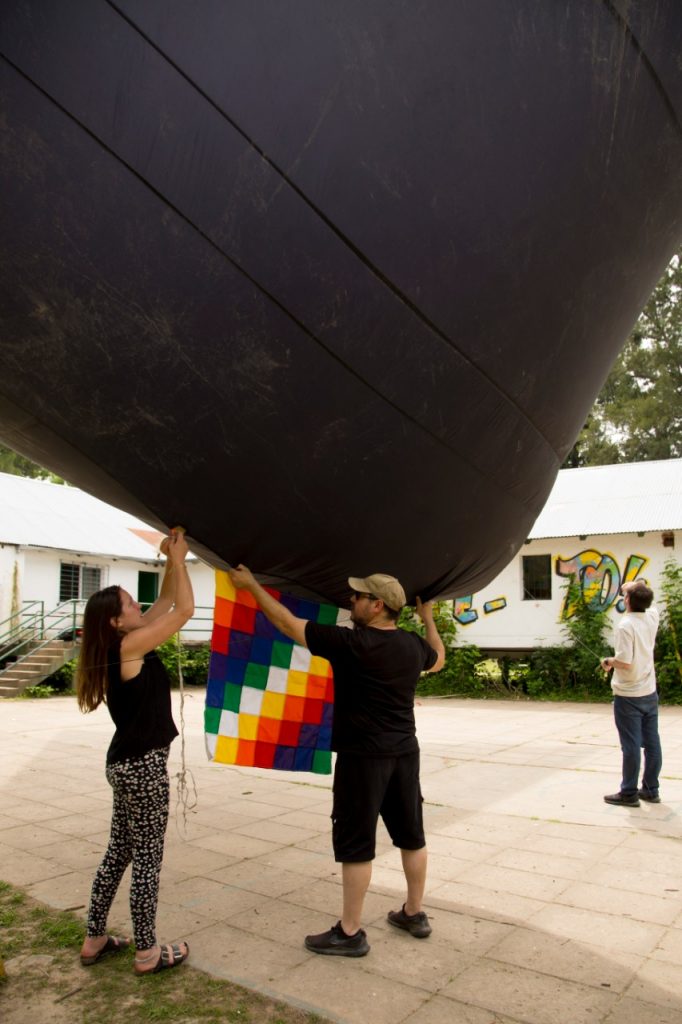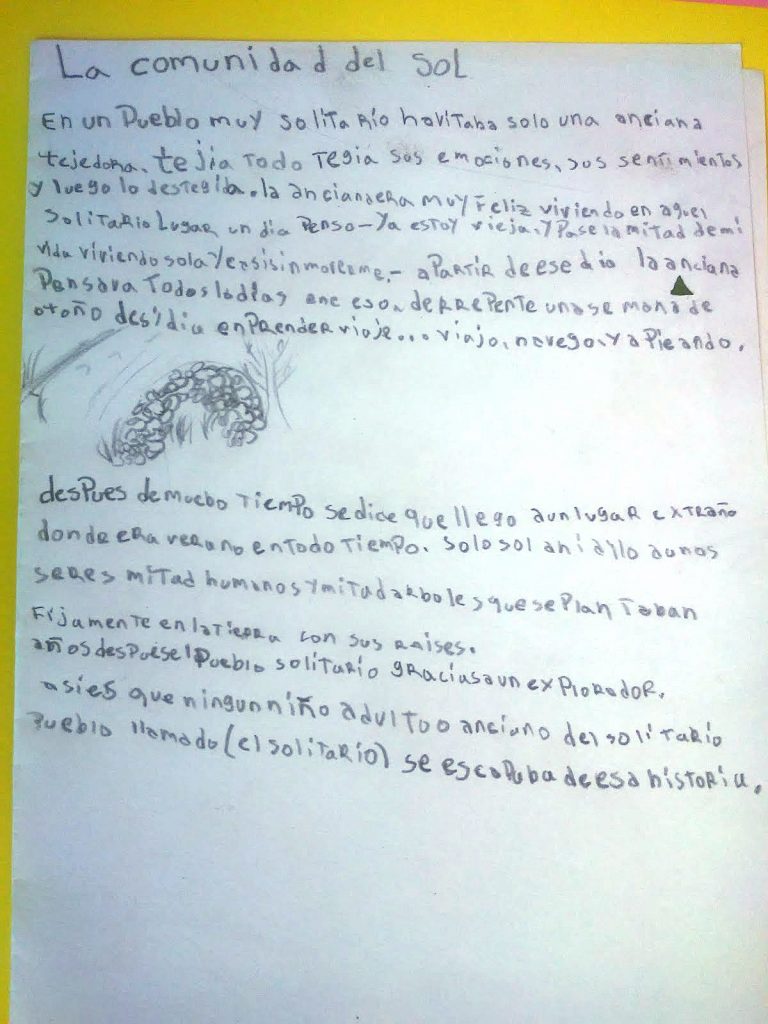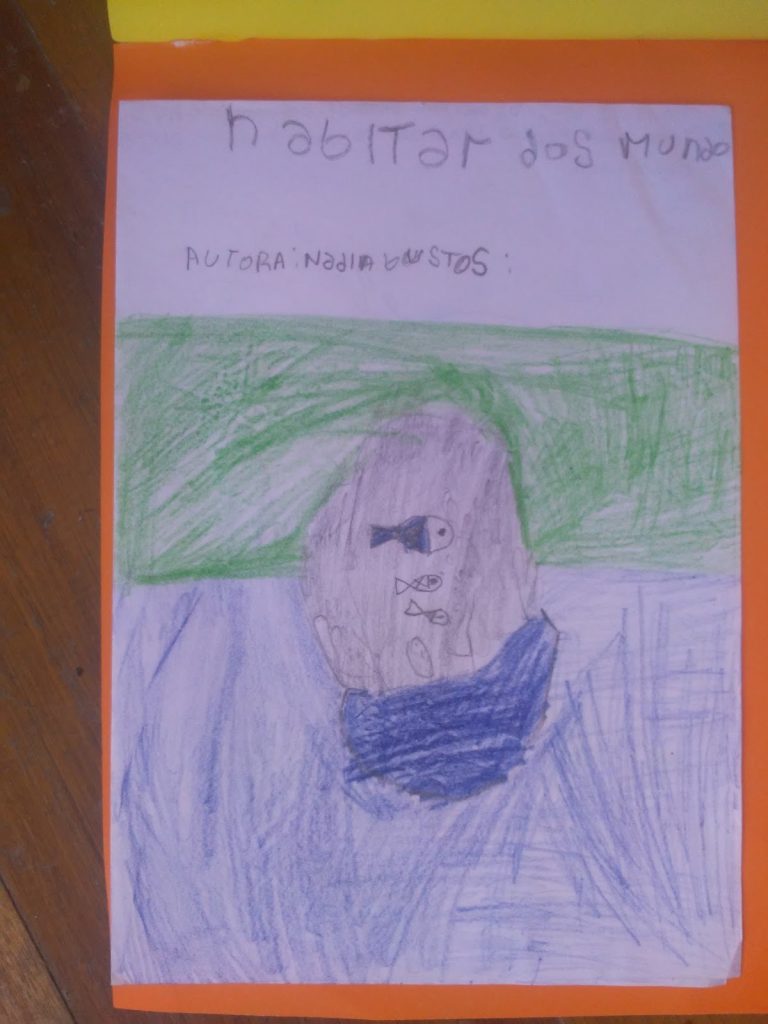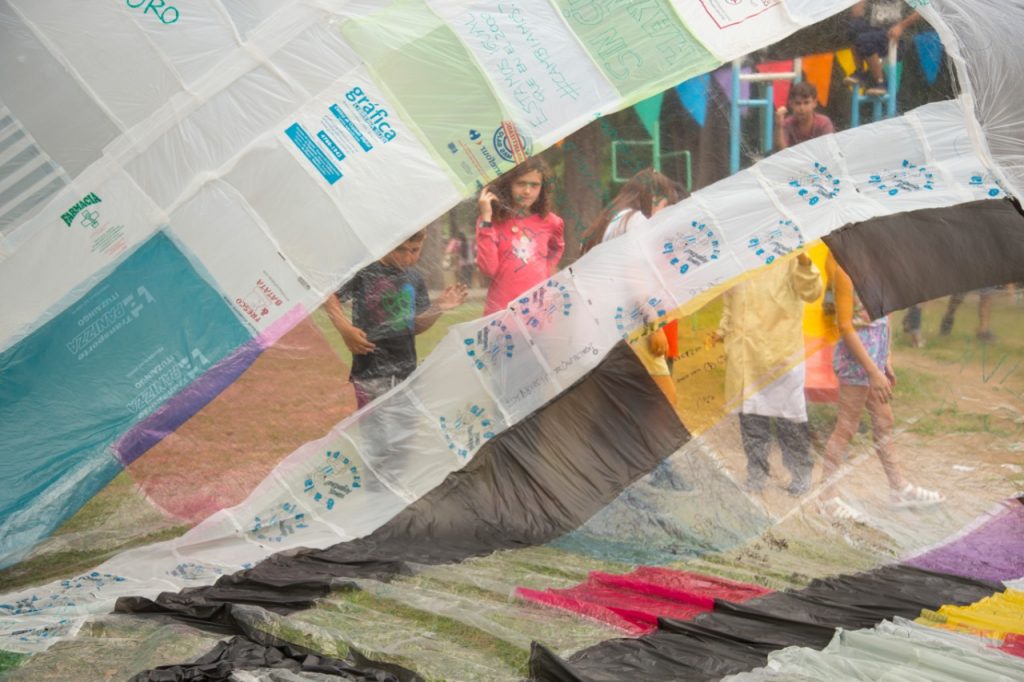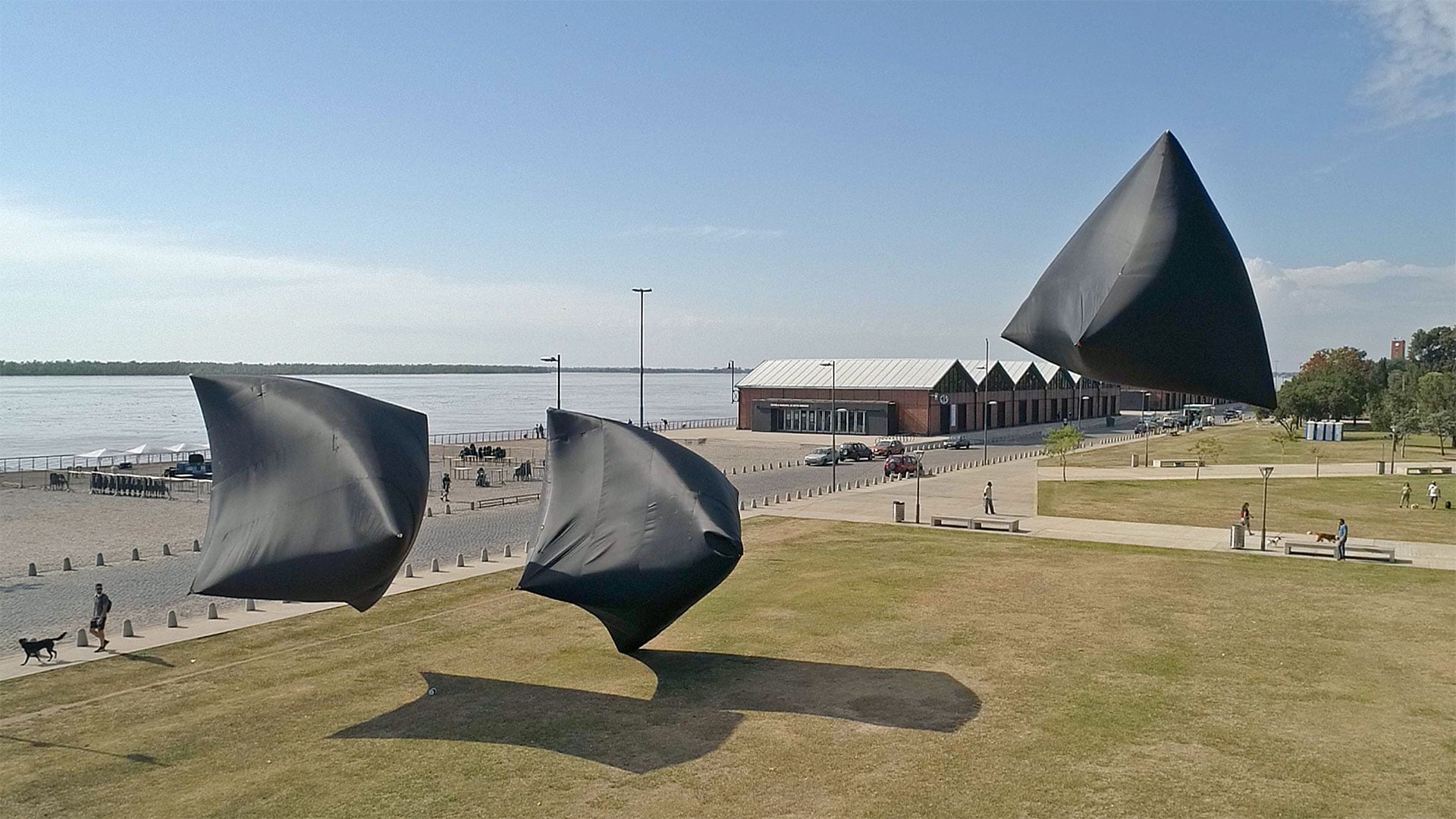¿Qué es la democracia?
¿Cómo se acerca este concepto tan valioso y complejo a niños y niñas de 6 a 12 años ?
Desde las aulas empezamos a observar que escucharnos, mirarnos, entendernos, llegar a acuerdos, saber manifestar desacuerdos, pensar de a muchos/as soluciones a conflictos, aprender a vivir con otros y otras, construir en el día a día la idea de comunidad, aprender a elegir, son algunas de las acciones que hacen referencia a democratizar la vida escolar.
Para hacer visible los 40 años de Democracia ininterrumpida Argentina y todas estas acciones que democratizan la vida en la escuela, nos sumergimos en un proyecto en el que participó toda nuestra comunidad escolar: un Museo Aerosolar.
Con el asesoramiento de Joaquin Ezcurra y Maxi Laina de la comunidad Aerocene y Carlos Almeida de la UNSAM comenzamos un proceso proyectual que avanzaba con simples consignas y las ganas de hacer de quien se iba involucrando.
El proyecto tuvo la siguiente crónica pensada y gestionada desde la escuela:
LA CASA
Cada familia juntó en casa 5 bolsas “tipo camiseta”. Las corto como se indicó en un modelo.
LAS ASAMBLEAS
Durante el mes de octubre, en el marco de nuestras asambleas de grado, grupos de madres, padres niños, niñas y docentes unían las bolsas que trajeron formando tiras del largo de la mesa de trabajo 2,4m.
Una vez armada la tira con marcadores indelebles dibujaban y escribían sobre la democracia Argentina.

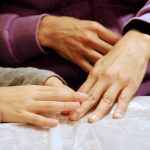
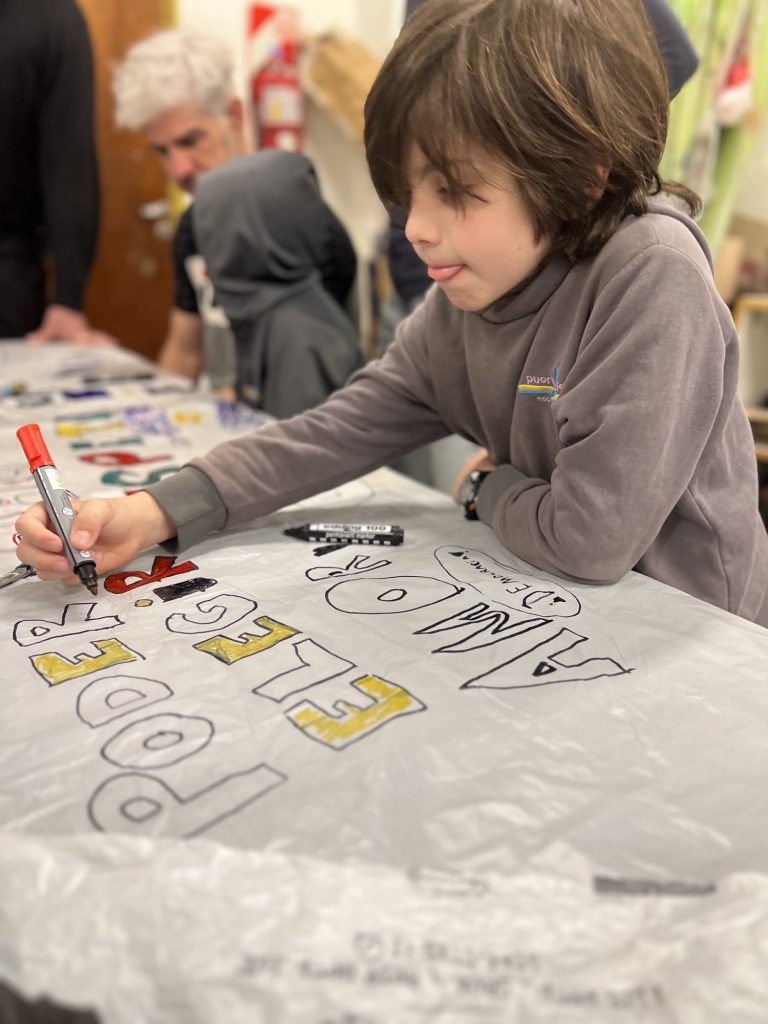
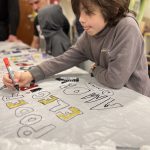

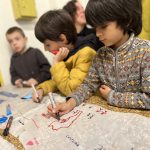


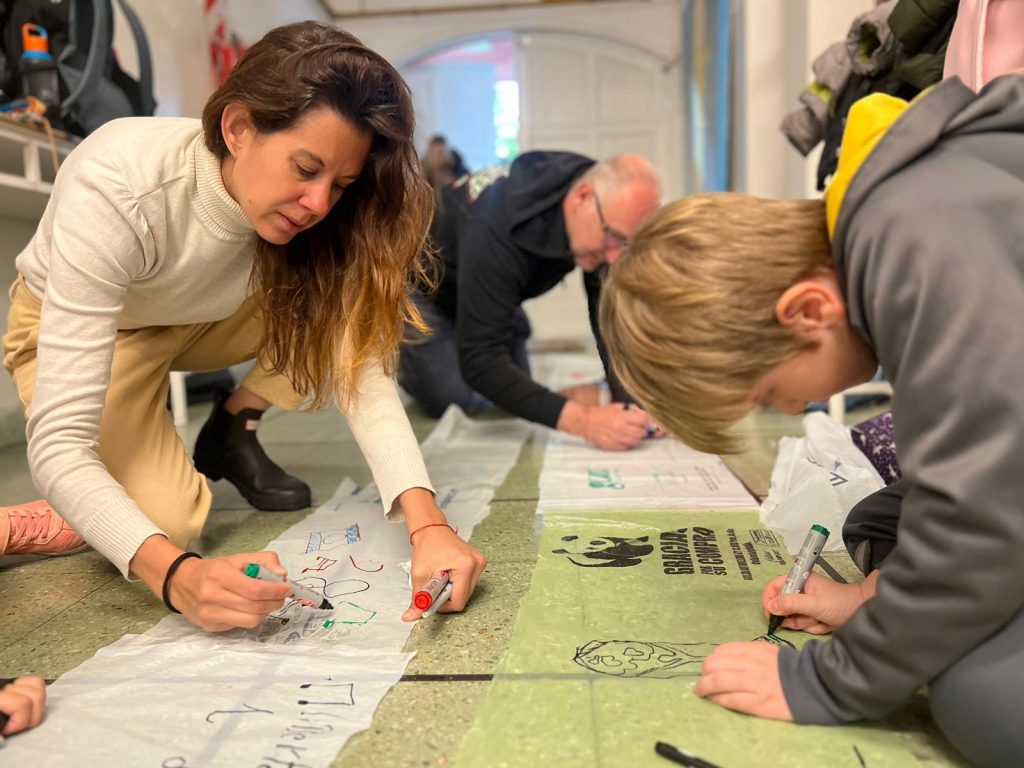
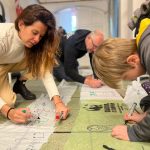

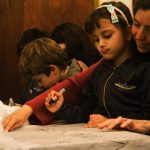
Todas las asambleas fueron el puntapié para iniciar la reflexión acerca de la democracia como forma de vida, la importancia de trabajar y sostener nuestra democracia.
En todos estos espacios se vivía y respiraba un ambiente de festejo y potencia colectiva.
Las producciones las fuimos colgando en perchas y hasta el momento nuestro museo parecía una tintorería de largos vestidos plásticos.
LA COMISIÓN
Una comisión de madres y padres tomaron estos “vestidos plásticos” y los unieron para formar paños más amplios de 3×3 o 6×3 o 9×3. En este proceso se sumaron también por deseo propio, tías y abuelas de los niños y niñas.
Era increíble ver la cantidad de material que se iba logrando ensamblar hasta el momento, era tanto que decidimos pasar de un museo de 6x18mts. a un museo de 9 x 27 mts. Sí un paño de 243 m2

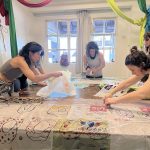
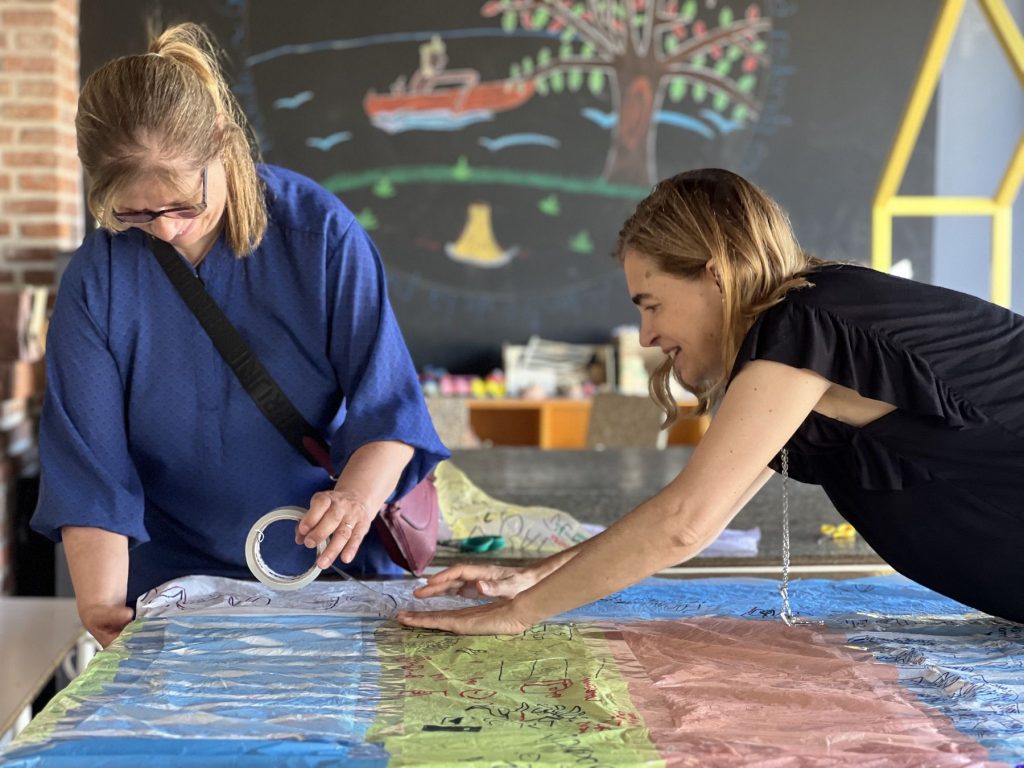
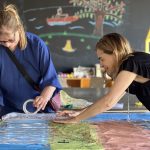
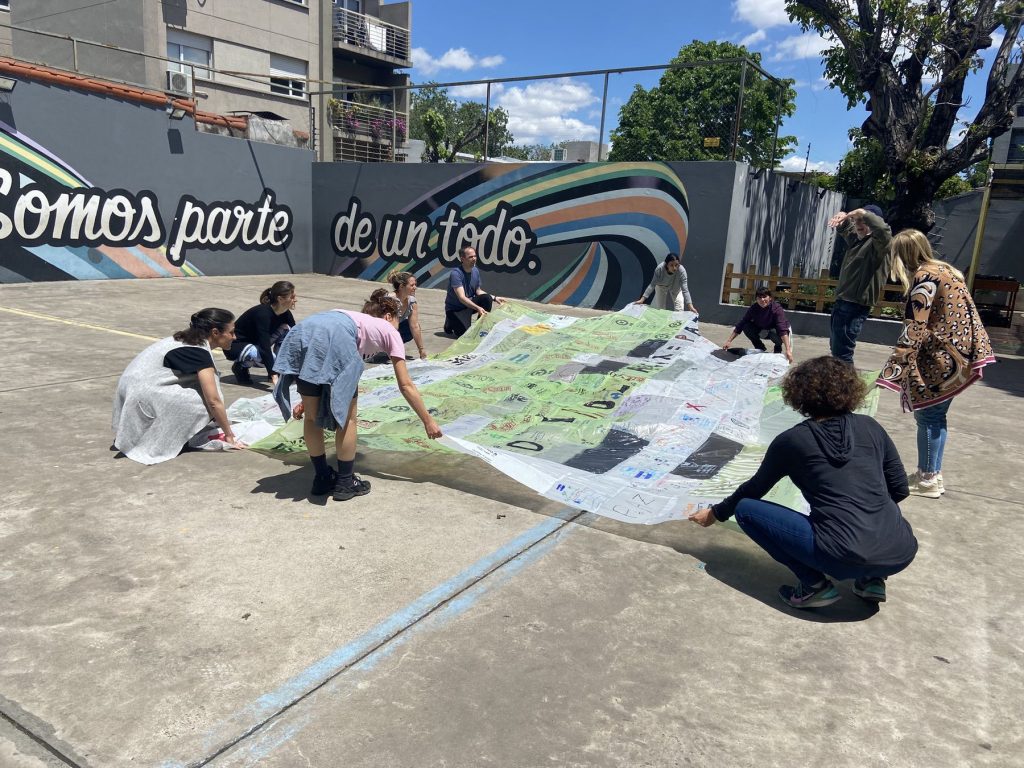

EL ATELIER
Con los niños y niñas del primer ciclo tomamos algún paño armado para hacer experimentos lúdicos. ¿Cómo sostener, cuidar e inflar esta membrana plástica tan frágil?. Cada vez que nos metimos adentro surgió la temática de la Democracia, el vuelo y el medio ambiente.
Los niños y niñas vuelven a sentir que esa membrana había sido construida colectivamente entre familias.
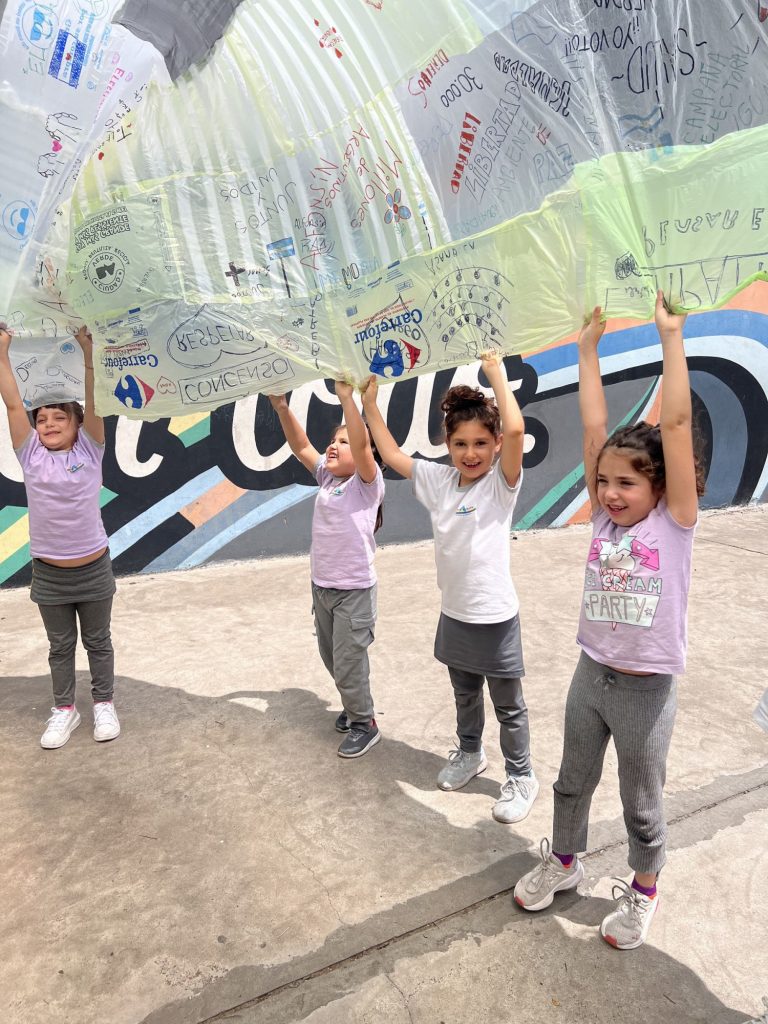
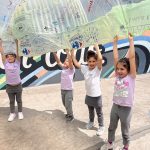
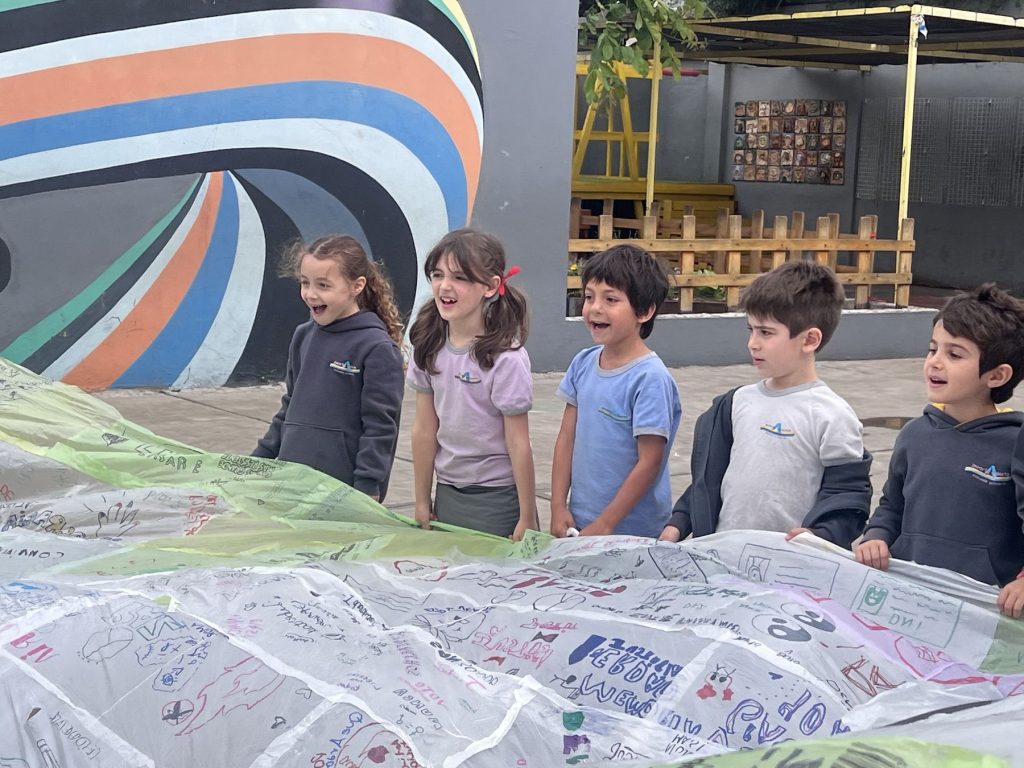



Con los grupos del 2do. ciclo trabajamos con maquetas sobre el plegado. Con papel verificamos las proporciones y la forma de plegar para alcanzar el tetraedro que define a nuestro museo.
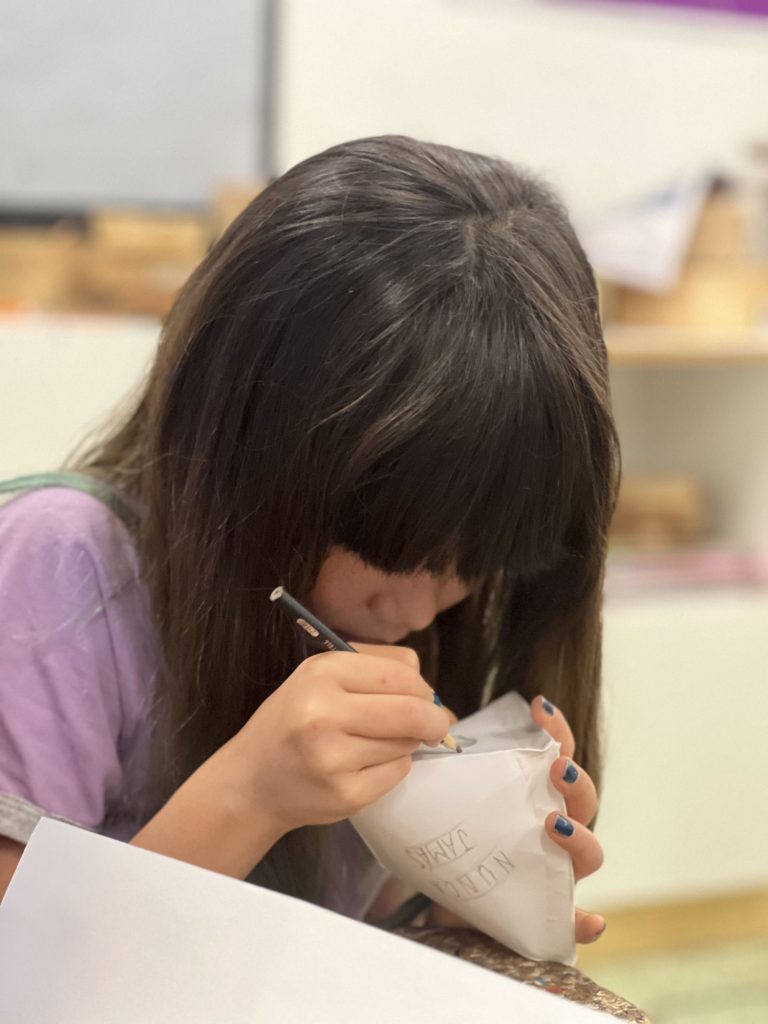
EL ENSAMBLE
Junto a Carlos Almeida y la comisión de padres, madres y equipo profesional, nos reunimos el sábado 25 de noviembre a terminar de ensamblar, plegar y levantar nuestro Museo.
Tuvimos que medir una y otra vez para lograr las proporciones necesarias: 9m x 27m.
Mientras unimos todo el material decidimos poner una ventana al cielo de 9 x 1.20 metros. Plegamos dando pasos coordinados entre los que sostenían cada lado de la superficie y llegó el momento de darle aire. Había viento, bastante, pero no lo suficiente para impedir ver cómo el aire se volvía museo.
Fue un sábado largo, colaborativo y emocionante.






EL NOMBRE
Para nombrar a este proyecto colectivo convocamos nuevamente a toda la comunidad. Cada familia propuso un nombre.
De todos los nombres propuestos se votaron tres finalistas entre la comisión de madres y padres y los directivos de la escuela.
Luego se colocó una urna a la entrada de la escuela para que cada familia vote.
Los nombres propuestos fueron :
- Puertasolar
- Aires de democracia
- Globo de la democracia
APERTURA DEL MUSEO
El 7 de diciembre realizamos la apertura de nuestro museo Aerosolar que por votación se llamó PUERTA SOLAR.
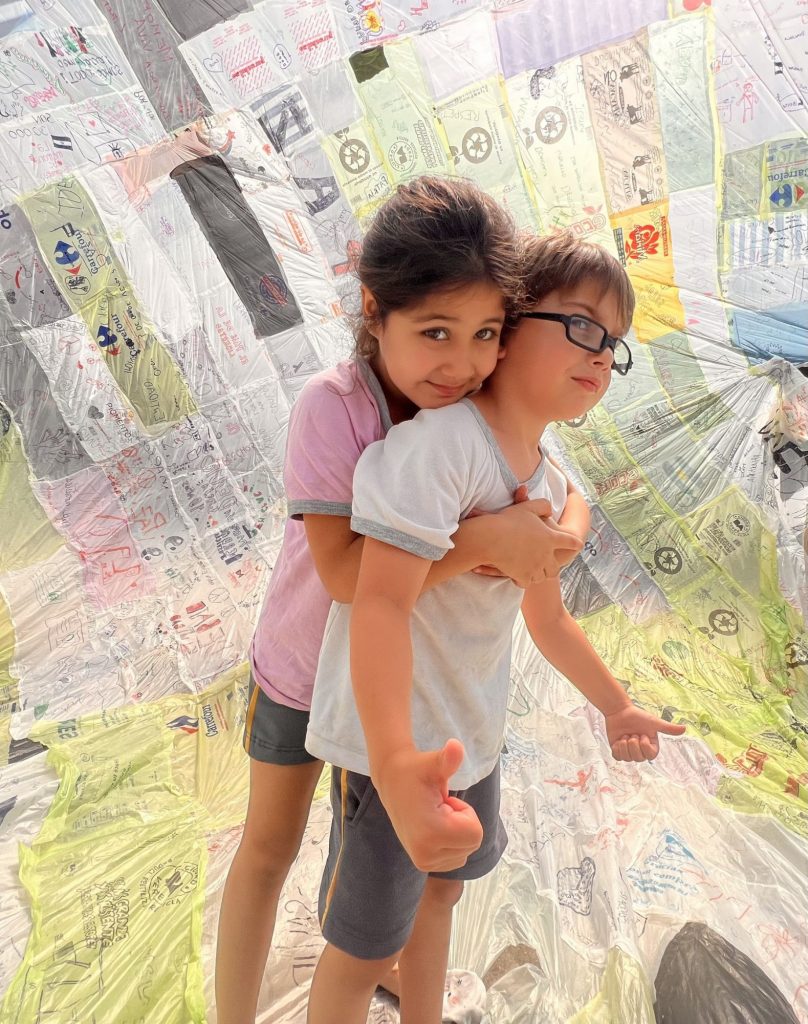
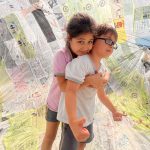
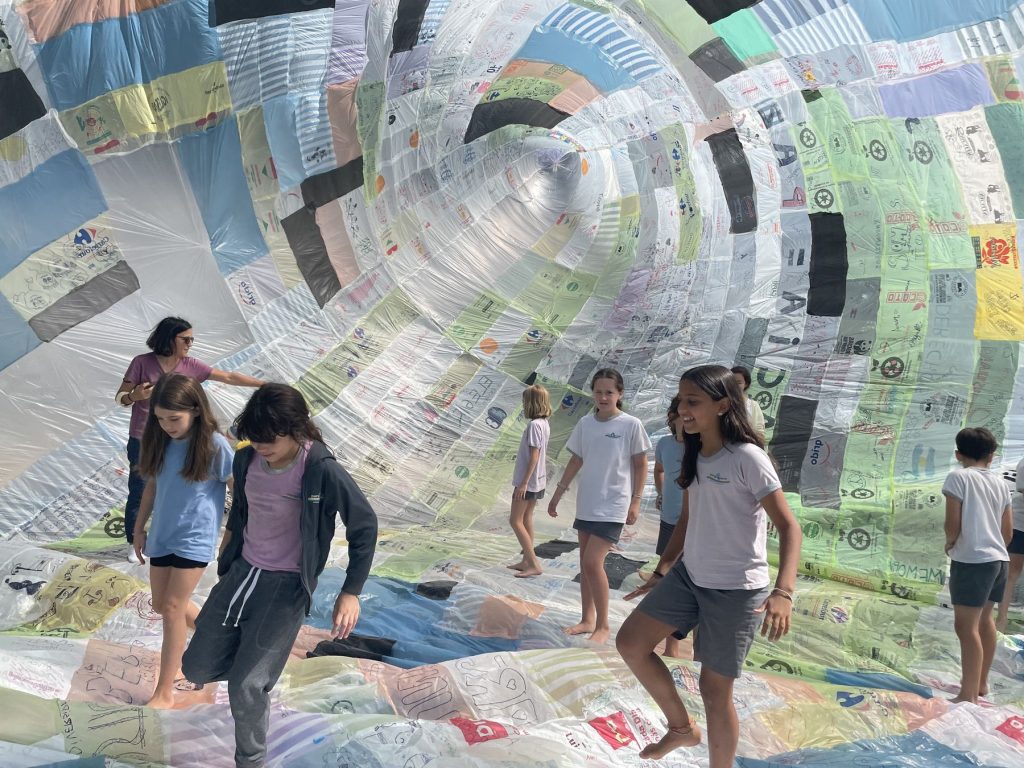
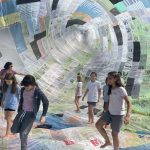
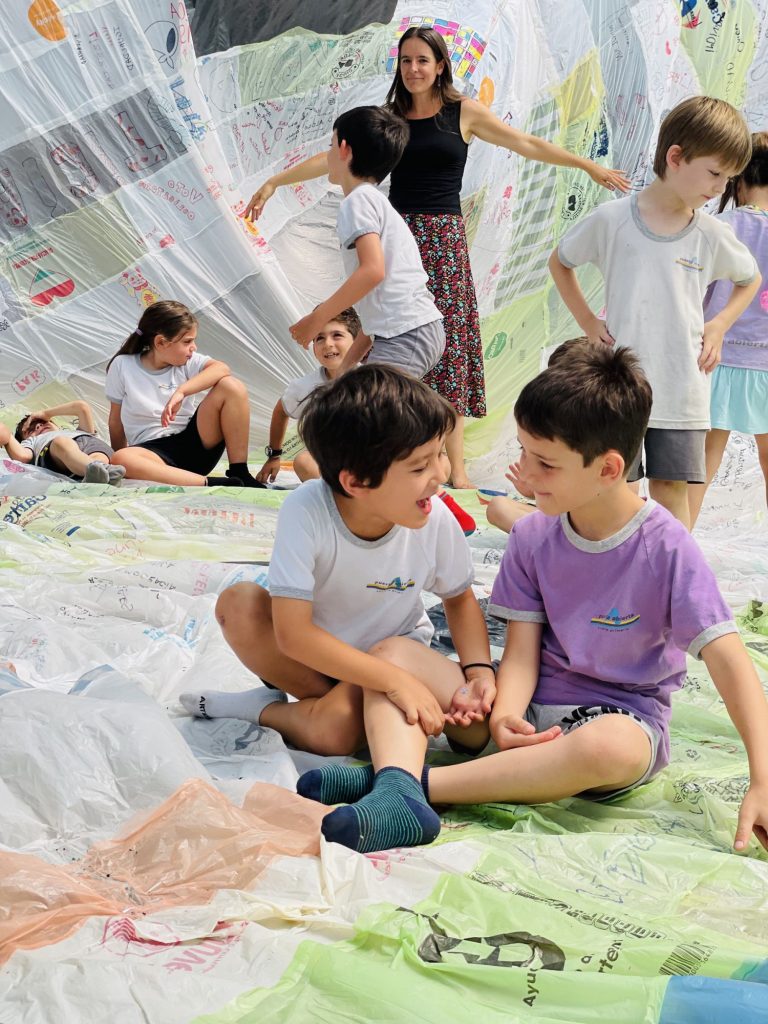
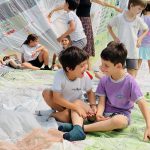
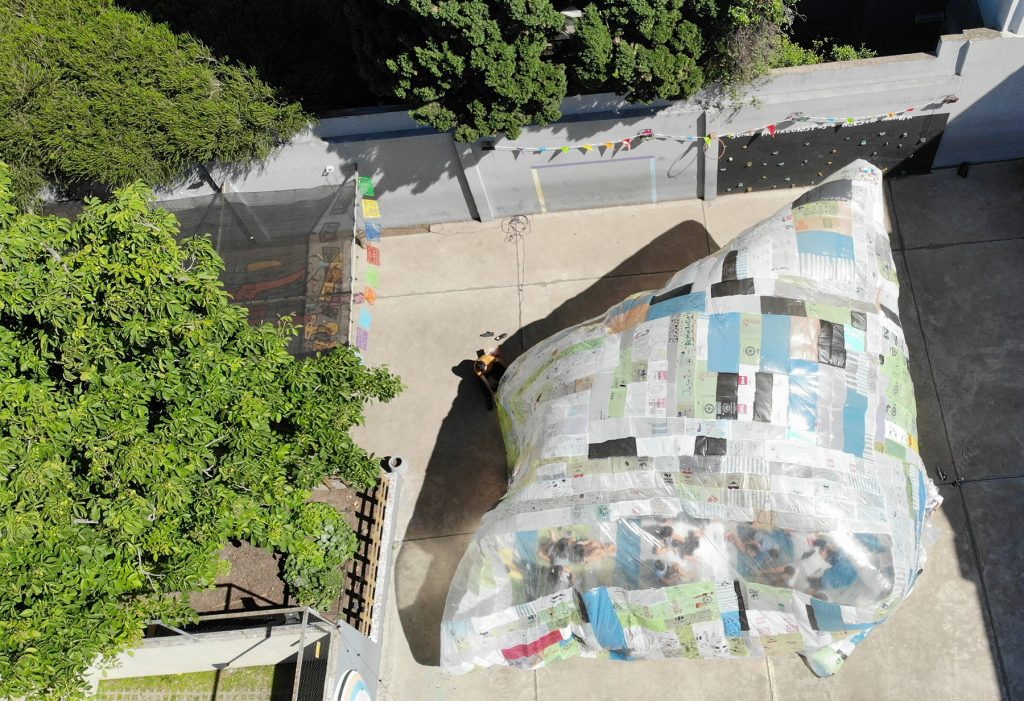
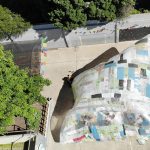
Ahora sí, un museo lleno de aire reúne la igualdad, la memoria, la justicia, la solidaridad, la diversidad, la libertad de poder elegir, la escucha, el respeto. Estas palabras tan potentes y significativas que no existen solas, en estado puro. Se interrelacionaron en un proyecto, en pasillos, en asambleas, en charlas en recreo, en reuniones con docentes, voces singulares y voces colectivas.
Fueron creciendo con cada soplo de aire, no de golpe.
Fueron creciendo de a muchos y muchas.
Fueron creciendo en comunidad.
Hasta crear el globo de la democracia, una “Puerta Solar” que hizo visible y habitable la democracia escolar en Primaria Puerta Abierta.
Un proyecto donde
TODOS FUIMOS Y NOS SENTIMOS PARTE DE UN TODO
Texto Paola Salaberri, Veronica Weisberg y Ana Williams
Video1 Eugenia Serrano
Video2 Gonzalo Ramón
Agradecimientos
Estudio Tomás Saraceno
Comunidad Aeroceno
Joaquín Ezcurra y Maxi Laina
Carlos Almeida
Primaria Puerta Abierta
Trixie Levy
Patri Gutman
Paula Schurman
Verónica Weisberg
Ana Williams
Vicky Chillado
Paola Salaberri
Giselle Bliman
Ma. Eugenia Martinez
Diego Divenosa
Carla Mier Torre
Equipo de maestros y maestras
Familias que se sumaron
Carolina, mamá de Haku D’Ovidio
Eugenia y Fernando, mamá y papá de Iván Molina
Julia, mamá de Nino Levacov Vilhena
Laura, mamá de Sofi y Santi Bello
Laura, mamá de Olivia Sosa Lucía, mamá de Nico Bustos
Moira, mamá de Rochi Sandor
Karina, mamá de Lorenzo Marin Muchevicz Paula y Gonzalo, mamá y papá de Juli Ramón
Romina, mamá de Vicente Bueno
Patricia, mamá de Oliverio y Fidel Torrella Casares
Cecilia, mamá de Vera Rosenberg
Carla, mamá de Ana Luz Ardalla Baglivo Luisina, mamá de Jero y Emilia Freytes Mariana, mamá de Toto y Lulo Aimaretti
Sabrina, mamá de Miranda y León
Giselle, mamá de Liber y Teo Cura Suaya
Lourdes, mamá de Felipe Moreno
Andrés y Nadia, mamá y papá de Teo Virzi
Viviana, mamá de Ochi y Eloi Arrués
María Clara, mamá de Pepi Mosquera Fernández
Carolina, mamá de Nika DAgostino Lital, mamá de Ramiro Nicodemo
Cecilia, mamá de Ciro Marchese
Bárbara, mamá de Guadalupe Ehmke
Natalia, mamá de Simona Camilleri
Eugenia, mamá de Balta, Clemen y Jero Sosa Fernanda, mamá de Dante y Milo Szulman Iván y Luciana, papá y mamá de Santiago Lemesoff
Marta Antonio, abuela de Ana Luz
Agradecemos a otras abuelas y tías que participaron y a toda la comunidad de Puerta Abierta que acompañó en las asambleas y la recolección de bolsas y especialmente a todos los maestros y maestras que hicieron posible este proyecto.

